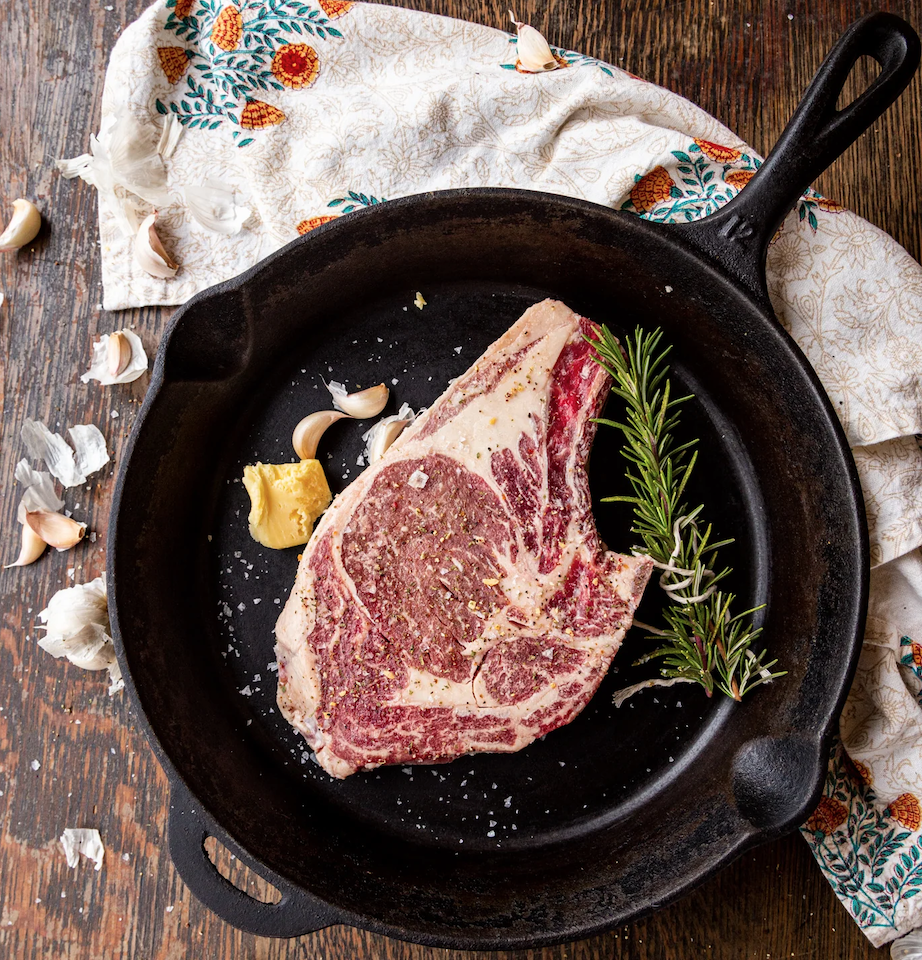
I think that dry aging has become a bit of a buzzword lately. You commonly see it associated with steak and always with beef (I’ll get into why in this post!) and it usually commands a higher price tag, especially at high end steakhouses. But why? And what does it really mean? Let’s dive in:
The Dry Aging Process
To start, dry aging is when a cut of beef is aged over a set period of time, as opposed to being packaged while it’s fresh. This is done in a temperature controlled room, in order to avoid spoilage, where large sections of meat (called primals) are hung and left to age for anywhere from a few weeks to a few months. Once the meat has been aged to the specifications of the supplier/butcher, it’s then cut, packaged and sold.
There are a few reasons dry aging has become a popular technique but the big one is tenderness. Dry aging allows time for enzymes that are already present in the meat to break down tough muscle fibers and connective tissues, making for more tender cuts as compared to when they’re fresh. Those same enzymes also impart a distinct change in flavor in the meat during dry aging- some describe it as beefier while others consider it nuttier.
Wet Aging
Another aging technique is called wet aging and it’s most commonly used by grocery stores. In fact, most meat sold in U.S. grocery stores today has been wet aged.
With wet aging, primals are vacuum sealed in plastic when they’re fresh and are then aged while being transported in trucks to be further broken down into cuts at the grocery store. Wet aging gets its name because during this process the meat doesn’t lose any moisture, since it’s sealed in plastic and not exposed to the air; this means that there’s far less “trim loss” as compared to dry aging, where overly dried out and inedible parts have to be trimmed before being further cut into steaks, etc. Wet aged beef simply does not loose the water weight that dry aged does. These factors make wet aged meat less expensive per pound compared to meat that’s been dry aged since the loss of meat and time consuming process of hanging, aging, and trimming drives up the cost.
What About Pork and Lamb?
Unlike beef, pork and lamb are typically not dry aged. This is because doing so doesn’t generally increase tenderness and develop flavor in the same way as it does with beef since the animals are younger and therefore don’t have those same tough muscle fibers and tissues that are present with cattle just prior to slaughter. In comparison, pork and lamb are typically hung for 1-2 days prior to cutting and then packaging.
What We Offer
Here at Widnor Farms, each and every cut of our red and black Angus beef, including our ground beef, is dry aged for a minimum of 16-21 days. Because of what the dry aging process entails our beef is pricier than what you’ll find at the grocery store but the flavor and tenderness is far superior and we’re proud to be able to provide it to you and your family.
PLEASE COMMENT BELOW